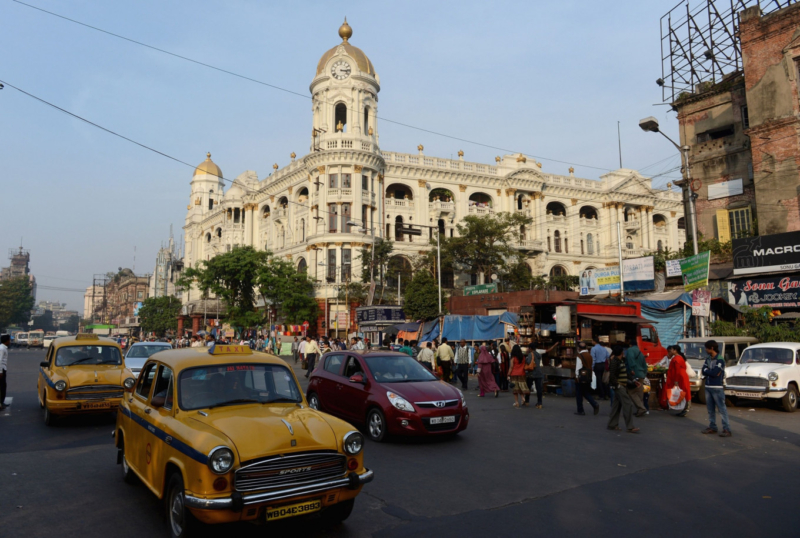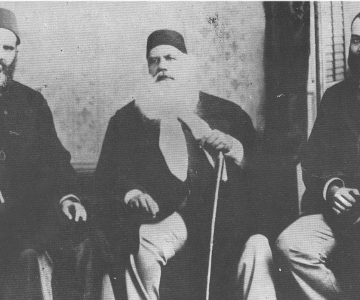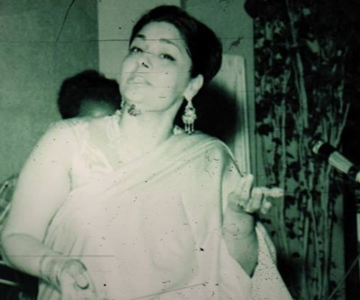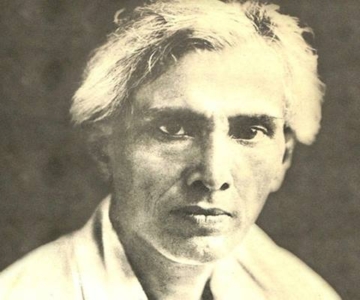By Vidya Rao
The streets of some cities, they say, are paved with gold. This city’s streets are paved with stories. Doubtless, they were also paved with gold once, but this would have been before the British pounced upon it and shook its pagoda tree. Which was how they referred to the looting of India that each ‘nabob’ of the East India Company systematically carried out. Though, to give the devil his due, it was the British that are considered to have founded the city.
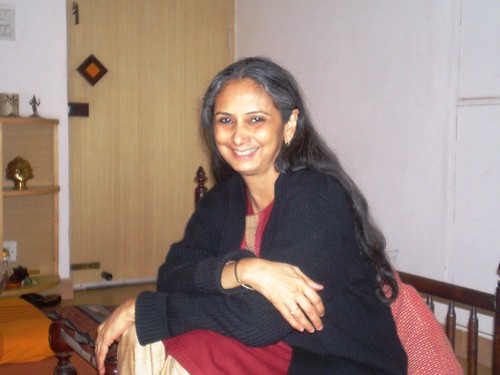 That last bit of information is something I learn from the section ‘The Story of Kolkata’ in the exhibition at the Victoria Memorial. I also read it in the opening pages of Bimal Mitra’s novel Sahib, Bibi, Ghulam. Set in the last years of the nineteenth century, the novel tells of the sumptuous lifestyle and then decay of a feudal family. It is the story of Pateshwari, Chhoti Bahu (so stunningly played in the film version by the one and only Meena Kumari; I’m horrified to learn that there is to be a remake which I worry will be a travesty of both novel, and original film), a woman who wants above all to experience romance, to be a real wife, to invent for herself and live a new kind of conjugality. It is the story of Badrika Babu, Cassandra-like, predicting the fall of the feudal order, of the city itself, and maybe even of the rise of a new political ideology, as his cry echoes eerily through the haveli ‘it will all turn red’. But the book also tells us the story of Calcutta, now Kolkata, and of all the people who live there, and who have ever lived there.
That last bit of information is something I learn from the section ‘The Story of Kolkata’ in the exhibition at the Victoria Memorial. I also read it in the opening pages of Bimal Mitra’s novel Sahib, Bibi, Ghulam. Set in the last years of the nineteenth century, the novel tells of the sumptuous lifestyle and then decay of a feudal family. It is the story of Pateshwari, Chhoti Bahu (so stunningly played in the film version by the one and only Meena Kumari; I’m horrified to learn that there is to be a remake which I worry will be a travesty of both novel, and original film), a woman who wants above all to experience romance, to be a real wife, to invent for herself and live a new kind of conjugality. It is the story of Badrika Babu, Cassandra-like, predicting the fall of the feudal order, of the city itself, and maybe even of the rise of a new political ideology, as his cry echoes eerily through the haveli ‘it will all turn red’. But the book also tells us the story of Calcutta, now Kolkata, and of all the people who live there, and who have ever lived there.
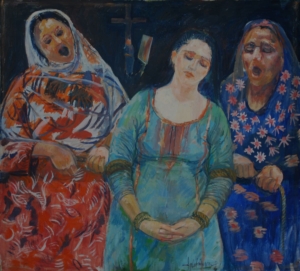
image- a painting by Iqbal Hussain
The city, Bimal Mitra tells me, was called Calcutta in memory of Calicut, which Job Charnock of the East India Company, and his compatriots had abandoned for fear of the Portuguese who had set their sights on that rich city. And it was founded at the site of the existing settlement known as Sootanuti-soot or thread, and nuti, or bundle-a village, therefore, of spinners and weavers of the famed cottons and muslins of the east. It was here that the British alighted as they fled the Portuguese. It was here that they established their first bases in India and, it was from here that they then, alas, fanned out, westward, northward, southward, and entrenched themselves so deeply that it would be 200-odd years before a man wearing a single unstitched garment made of another bundle of handspun and handwoven sooti threads, would ask them to quit India.
I remember also being told that the name ‘Calcutta’ was a British corruption of ‘Kalighat’ and that too might well be so, for is not the Great Mother, in her form as Kali, the patron goddess of this city? Her temple is in the heart of the city. Her devotee, Shri Ramakrishna Paramahamsa, was one of modern India’s most revered sages. In her form as Durga, her entering the city– her mother’s home– at the start of the dassehra festival, her slaying of the demon, and her departure back to the abode of the gods, is celebrated with such fervour that the tenor and pace of the life of its inhabitants changes, is stepped up, comes to a near-standstill for days.
Bimal Mitra’s novel could well be illustrated with Kalighat’s pat paintings- those satirical depictions of the city’s men about town, housewives, merchants, hypocrites, and courtesans. In Bimal Mitra’s book the courtesan is called Chunni Dasi.
It is a story of two Chunni Dasis that I want to tell here. I will call them, most uninspiringly, Chunni Dasi 1 and Chunni Dasi 2. The first lived and worked in the early years of the twentieth century, and her story was told to me by my mother. The second, I met last week.
Bowbazaar, 2006. I have taken a ride on the metro, stopping my journey long enough to look at the mural on the walls of the metro station of a naach (nautch) in progress. They are all there, the dramatis personae-the ‘nautch girl’, as the British called these artistes, her skirt swirling about her as she dances, the regal listener, hookah in hand, the instrument-playing sangat artistes. The listener, I notice is Indian, not British, so at least the dancer can be sure she has an audience who understands her art.
I have alighted at the Bowbazaar station; my destination is Bowbazaar Street.
The name summons up for me, again, Bimal Mitra’s novel. For it is with Bowbazaar Street that he begins his story: ‘At one end of the lane stands Bowbazaar Street’ .This serpentine lane ‘Banamali Sarkar Lane’ is where the haveli of the Choudhuris is located.
I am in search of Chunni Dasi. Bowbazaar Street, where she lives, is some distance away. Asking directions, I get confused, take the wrong turn, and am asked by a shocked-sounding old gentleman if its Lalbazaar I want to get to. Lalbazaar and Bowbazaar are adjacent areas, one lies to the left of the traffic lights, the other to the right. Lalbazaar is today the police headquarters. But Bowbazaar is where the courtesans live, proud descendents and inheritors of a great tradition of music and dance, artistes still trying to practice and teach their art, in secret if need be, or silencing themselves for ever in the name of respectability.
I recall that the word ‘lalbazaar’ has probably a British provenence, and dates back to the draconian Cantonments Act and the Infectious Diseases Act of the 1860s. It reminds me of the rounding up of women, most of them artiste-courtesans, into the lalbazaars to ‘entertain’ the British soldiers of a much inflated British army, post-1857. Some say the word ‘lalbazaar’ derives from the red coats the Tommies, the young British soldiers, wore. Some say it is merely descriptive-the walls of the buildings on this street are of exposed red brick or are painted red. Veena Talwar Oldenburg writes of an elderly descendent of the courtesans of Lucknow who spoke of the memory of those days with bitterness-the soldiers had neither tameez nor tehzeeb, neither decorum, nor understanding of music or dance. The women who found themselves in the lalbazaars were subjected to humiliating medical examinations, and were now considered mere prostitutes.
Looking down the road to where Lalbazaar is, I remember songs that echo the pain and humiliation, the terror of that moment:
Apne piya ko main dhoondhan nikasi,
Dagaria bhulani, haay, more balamva.
Jahanva main dhoondhu, gora sipahi
Sadak badshahi, haay, more balamva.
Setting out to look for my beloved, alas, I’ve lost the path.
Now, alas, all I see are English soldiers on the imperial road.
Before I lose my way again, I take a tram. The tram moves at a sedate pace down the street. Overhead are huge fans-they must be 3 feet in diameter, I think — whirring, churning the heavy humid Kolkata air to give the passengers some relief from the heat. Kolkata must be the only city in India where trams still run. The tram I take runs on electricity. The first trams that plied on this street were, however, drawn by horses.
The Victoria Memorial tells me this-that the first horse-drawn trams were introduced on 24 February 1873. They were discontinued after nine months, to start up again three years later.The exhibition at the Victoria Memorial, otherwise so full of charming detail, doesn’t tell me why. Those first trams ran from Sealdah Station to Armenian Ghat and went via Bowbazaar.
My tram rolls down the street, its gentle movement inducing me to dream I’m in 1880-something, travelling on one of those horse-drawn trams. Would its movement have been very different? How long would it have taken me? And what would it have cost me?
Today, I’ve paid the princely sum of seven rupees to ride on the tram. But this is a city where a man might still ask for 2 paise worth of tea and a 3-paise packet of peanuts. A meal for 5 paise.
 At this hour, early afternoon, the tram is quite empty, and when I miss my stop, the conductor makes the driver halt for me again. I walk down the street now, asking directions. That is no problem, since most people here speak Hindi, and are, in fact Hindi-speaking migrants from the northern plains-Biharis, UP-ites and Rajasthanis. Chunni Dasi will tell me that she came here about 50 years ago, from Banaras with her uncle and her elder sister. She was brought here to learn dance and to be initiated into the tradition of the tawaif community.
At this hour, early afternoon, the tram is quite empty, and when I miss my stop, the conductor makes the driver halt for me again. I walk down the street now, asking directions. That is no problem, since most people here speak Hindi, and are, in fact Hindi-speaking migrants from the northern plains-Biharis, UP-ites and Rajasthanis. Chunni Dasi will tell me that she came here about 50 years ago, from Banaras with her uncle and her elder sister. She was brought here to learn dance and to be initiated into the tradition of the tawaif community.
I find the lane, the dagaria, where her home is. At the entrance to the lane is a paan shop. The paanwala is from Bihar, and his Hindi accent reflects the musical tones of his dialect. He tells me that the Bai ji is upstairs, and nods in the direction of an old grey building. It must have been beautiful once in an imposing European-classical way, with its columns and cornices. Now it is shabby and run-down, badly in need of a pot of paint; peepal plants have taken root in the cracks and crevices that time and lack of care have insinuated into the walls.
It is also a very big building. How many people lived here earlier, and what were their living arrangements? Today, the building is divided into tiny one-room tenements that I see as I start to climb the stairs. Sounds of music filter out through the doors I pass, but these are recordings of film songs, not the sound of a professional singer at her riaz. The stairs are broken, paan-stained and slippery with water that has sloshed onto them from the two plastic pots on a pole that the bhishti is carrying to various rooms within this building. Clearly there is no running water for the inhabitants’ use. The stairs are dark too, and I make my way carefully, up, up, up four flights of stairs to the roof.
There is a sense of relief to be out in the open, in the sunlight, to breathe fresh air again. The first thing I see is a madhumalati creeper growing bravely in a tin can. There are no flowers on the vine, though. There are several small rooms on the roof. In the first one, closest to the staircase, a group of men is playing cards. On the terrace, in the sunshine, another man reclines on a rope-strung wooden charpai. Another sits on a mat on the floor eating maachh-bhaat.
I ask for Chunni Dasi and someone calls out to her.
She has her back to me. She is leaning over the terrace wall and is washing her hands. No doubt the water is splashing onto the street below. I suddenly have the unworthy thought that I am lucky to be here, up on the roof, not in the lane below, in the line of that little waterfall. She is wearing an old faded kaftan with a printed design of large blue flowers. She turns, wiping her hands.
She takes my breath away. In the midst of all this squalor is her face, as lovely as a flower; she has the delicacy, grace and wistful beauty of the Nutan of Sujata. Her eyes are as long and large as a deer’s. Her face, a perfect oval, is mobile and expressive. She could not be other than a dancer or an actress.
She comes up to me and greets me with a dignity that is at the same time warm and welcoming. She asks the young woman with her– her daughter, I realize — to clean the room that is her’s, and to spread a sheet for us to sit on. The room is only a little larger than the sheet. A small section is reserved for her puja; there are a few idols of gods, some withering garlands of marigold flowers. The room also contains a tin trunk, a cement tank to store water, a plastic drum for more water, a few cooking vessels, and a pedestal fan. She switches on the fan, and invites me to sit down with such grace that this might be a richly appointed room with exquisite furniture. Actually it is. For if clothes maketh the man, surely manners maketh a space.
‘You sing?’ she asks me, as she sends her daughter down to the paanwala for thumsup. ‘Don’t worry’, she adds, smiling. There are no cold drinks in this mohalla-we are all singers and dancers here; the drinks will be warm. Then she says, ‘See how the world has changed. In the outside world, the performance of music and dance brings fame, respect. These are respectable professions now, and art is considered good and beautiful. You can hold your head high and call yourself a singer. But, for us, music and dance have become a sign of shame. We dare not sing or dance for fear of being considered women who do “the other work”.’ She asks me if I understand what she means by ‘the other work’; I nod ‘yes’.
She says, speaking of herself and women like her, ‘ham tawaif’, ‘we tawaifs’. She does not pretend to be other than she is, because she knows that tawaifs are artistes; she knows that I know that too.
She tells me how she came to Kolkata as a child, to learn dance and to perform. ‘My sister was a good dancer too’, she tells me. She tells me that she teaches dance somewhere else, in another mohalla, far away from here, somewhere where she will not be recognized, away from the prying eyes of neighbours. She cannot, dare not dance or sing here.
We talk for a while. I finish my thumsup, and I take leave of her. She bids me farewell as graciously and with as much warmth and sincerity as was her welcome. She invites me to visit again whenever I am in Kolkata.
I wend my down the slippery stairs, come out into the lane. I look back and see the peeling paint, the dark doorway, the crumbling, decaying building. I remember her Nutan-like beauty, her grace and dignity.
The paanwala calls out: ‘Did you meet her?’ and brings me back to myself. I nod, smile and wave him goodbye and pass through, onto the busy Bowbazaar Street. I find the metro station and ride home on the metro. It is rush hour now, and there is not space to fit a pin in the carriage into which I manage to squeeze myself. Once in, I am held, supported by the mass of people-an unlikely Preserver-deity in the pralaya of modern life. Upheld by the crowd, I do not lose my balance when the metro lurches and rocks crazily on its way
As I ride home on that bucking-bronco-metro, I remember the story of the other Chunni Dasi. I remember it as my mother told it to me. I hear her voice again, telling me that story.
Burrabazaar, circa 1927. It is nearly 80 years since my mother, a little girl then, visited another Chunni Dasi. She lived not far from where I stand, in the adjoining mohalla of Burrabazaar.
She was a little girl then, maybe 9, maybe 10. It was the greatest adventure of her young life. Her uncle had taken them all-herself, her sister, her brother-to the theatre, a special treat.
My mother’s was an old Kolkata family, part of the elite, the men-and even the women had been to school. Some had even been to college, and one aunt had actually become a doctor. My grandfather-I had never seen him, he died long before I was born-was one of those creatures the nineteenth century seemed to produce in such abundance: a social reformer. So though the family often invited theatre companies to perform plays at home, the theatre, the playhouse was viewed with some suspicion. There were women acting and singing in the plays at the theatre, about whom, as my grandfather would grumble, the less said the better.
Chunni Dasi was the star of this play-a great actress, a great singer. The play was full of songs, and my mother loved every minute. On the way home her uncle asked, amused to see her delight, ‘Would you like to meet her then? Would you like to meet Chunni Dasi? I could take you to her house, you know.’
Yes! Oh yes, yes!
It has to be a great secret. A courtesan’s house is no place to take a little girl. Never mind that she’s one of the finest singers and actresses of the time.
The little girl can keep a secret. She says not a word to anyone, never betrays herself by a single word, look or gesture.
The days limp by. Time seems endless. When will we go to meet Chunni Dasi?!
Then one day, her uncle comes for her in his horse-drawn Victoria. Ostensibly, they will go for a ride by the river.
It has been carefully planned, and she’s ready for the longed-for visit. She is wearing her best blue organdy frock, and has combed her hair into careful ringlets. And then, a special touch, has dusted her face lavishly with talcum powder.
She laughs as she tells me this, Would you believe it! We used talcum powder on the face in those days!
The ride in the Victoria seems interminable. Does Chunni Dasi live at the other end of the earth? Beyond the moon?
Then they are there, and her jaw drops in amazement at the beautiful house, its clean white painted columns with their fluted edges, the carved wooden doors. They walk into a large room, airy, clean. There is a spotless white sheet on the floor, and beautiful brocade bolsters and cushions scattered around. Above, from a hook in the ceiling, hangs a crystal chandelier.
She thinks, they must light a hundred lamps in that!
Then she sees Chunni Dasi.
Chunni Dasi sits like a queen, leaning on a brocade bolster .Beside her is a large silver paandaan; also an ornate hookah. Chunni Dasi holds one end of the silken pipe in her hand. On the walls behind her are huge mirrors, the frames of which are made of worked silver.
The child has never seen anything so beautiful.
She is introduced to Chunni Dasi who welcomes her as if she were visiting royalty, not a little girl in an organdy frock and with too much talcum powder on her face.
Because she is a little girl, Chunni Dasi takes her onto her lap.
The child looks at the saree of silk and gold, at the jewels in her ears, the jhoomar on her forehead, the strings of pearls around her neck. Her mehndied feet are adorned with silver paizeb.
Chunni Dasi strokes the child’s cheeks. She calls out to someone to bring sweets, feeds her a rasagola. The sugar syrup trickles down the child’s chin, wrecking the talcum. Chunni Dasi wipes her face gently with a silken cloth.
Then she asks the little girl to sing something. She has heard that she loves singing.
The child sings at once. Her voice is clear and sweet and true. Chunni Dasi is charmed, and hugs the child.
The child says, ‘I’ve sung for you. Now you sing for me.’
Chunni Dasi’s eyes twinkle at this, but, gracious as she is, she does sing.
The child is delighted, and would ask for more, but… its time to go. They will be missed. A ride in the Victoria to the river doesn’t take this long.
The adventure is over. The child goes back to her everyday life.
Chunni Dasi goes back to hers.
And Uncle moves, as he has always done, between those two lives and spaces.
Years later, the child is grown up, has fought to become, has become a singer. Home is the imperial city of Delhi. The world is different now- it is one she has helped usher in. It is a world where women don’t have to be courtesans to sing.
It is one where, increasingly, courtesans shall not sing.
But, still, Chunni Dasi is invited to sing at the Puja celebrations in the city where my mother now lives, a thousand miles away from Burrabazaar. Chunni Dasi is old now. But her voice is as beautiful as it ever was. The little girl, now a grown woman is delighted, as delighted as she had been all those many years ago at the theatre.
She does not need to keep it a secret when she goes backstage to pay her respects to the aging singer.
She asks, ‘Do you remember me? I had come to visit you once.’
Chunni Dasi smiles graciously and strokes the younger woman’s cheeks. She feeds her a piece of barfi.
Then she says, I’ve sung for you. Will you sing for me now?
As I ride back in the metro, squashed between most of Kolkata’s inhabitants, I think of my Chunni Dasi, and my mother’s. I see the room on the roof and the blue kaftan with flowers on it, and I see the silk and gold saree and the pearls. I remember the crumbling walls, the peepal sprouting in the damp crevices, and I remember the room with the brocade cushions and the chandelier with a hundred lights.
Then it is time to lunge and push and make my way, twisting and sliding, through the mass of bodies, to the door.
I lose my way again.
But that is another story.
